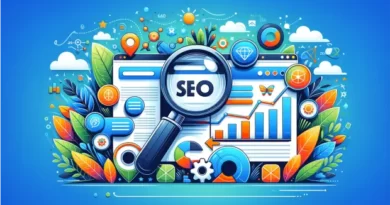10 Hot Digital Marketing Trends for Your Marketing Strategy
- Today’s Top Ten Digital Marketing Trends
- 1. Social Networking Marketing(SMM)
- 2. Video Conferencing/Web Casting/Video Streaming
- 3. Integrated Marketing Communications
- 4. SaaS Applications / Cloud Computing for Marketing Automation
- 5. Web Content Marketing Trends
- 6. Mobile-first Design
- 7. AI Chatbots
- 8. Minimalist Web Design
- 9. Content is King
- 10. Big Data and Personalization of Content/Marketing
- Final Thoughts
Digital media and marketing are evolving at a rapid pace — and we’re not just talking about how we advertise to consumers, we’re talking about the tools, software, and devices that empower and enable us to be successful. Each year we see a new class of successful digital startups emerging and disrupting traditional marketing. However, there are some established players in the industry that are also causing ripples within the landscape.
These 10 digital marketing trends are representative of the changes that are happening in digital media marketing. Should your marketing strategy address them? Well, that is for you to decide. My take is that this innovation should cause you to rethink many of your assumptions about digital media marketing.
Today’s Top Ten Digital Marketing Trends
Here are the few benefits of following a digital marketing trend:
- Digital marketing trends leverage new technologies to engage customers more effectively.
- They help businesses understand and predict consumer behavior, enhancing targeting and efficiency.
- Trends like personalization and interactive content improve user experience and increase brand loyalty.
Let’s know about each of the trend in huge details.
1. Social Networking Marketing(SMM)
Social networking marketing is a method of reaching out to new clients via existing ones. Your current customers are the best people to market your business for you because they already like your business and know about it. They also have a connection with you, which means they will be more likely to buy from you and recommend your business.
Social networking marketing is not just something that big companies do; it can be applied to any size company, large or small. The purpose of social networking marketing is to use social media sites such as Facebook, Twitter, and LinkedIn, among others, to connect with potential customers and increase sales.
2. Video Conferencing/Web Casting/Video Streaming
Video conferencing, webcasting, and video streaming are the three terms that are used to describe technologies for delivering or receiving audio-visual content remotely.
The term webcasting is generally used to refer to the use of multimedia content delivered over the internet using streaming media technology. The method of delivery can either be peer-to-peer (P2P) or server-based. It uses the Hypertext Transfer Protocol (HTTP) or File Transfer Protocol (FTP) to deliver information in real-time.
Video conferencing is another free marketing technique to connect with customers, suppliers, partners, and vendors. It adds value to your business relationships. It allows you to interact with your clients, suppliers, partners, and vendors at any time of the day or night by connecting them with your office.
Click here to read: How to Develop an Effective Business Intelligence Strategy?
3. Integrated Marketing Communications
Integrated Marketing Communications is a concept that has evolved in the business world in the last 20 years. Typically, Integrated Marketing Communications is a methodology where online and offline marketing activities are synchronized with each other to achieve specific goals.
Integrated Marketing Communications usually refers to advertising, public relations, or personal selling activities conducted by an organization or individual to promote a product or service. It is used in various forms by organizations of all kinds, ranging from small businesses to worldwide enterprises. Various ways exist, including:
► Social media marketing (SMM)
► Google AdWords
► Google AdSense
► Pay-Per-Click (PPC) campaigns
► Search Engine Optimization (SEO)
► Email marketing
► Content marketing (CMS)
The success of Integrated Marketing Communication strategies depends on how well these different marketing components are coordinated with each other. This is why companies need experts who know the best practices for each of these channels. And although it’s easy to get overwhelmed by the range of available options, you don’t need to be an expert in each one of them to succeed at it. Integrating different marketing components is more about strategy than execution.
4. SaaS Applications / Cloud Computing for Marketing Automation
The growth of cloud computing has been explosive. It’s now being used to deliver many of the most popular services including Facebook, YouTube, Gmail, Google Apps, SalesForce, Office 365, and Dropbox.
Cloud computing is a concept for providing on-demand network provisioning of customizable computational power (e.g., connections, servers, storing, applications, and services) that may be swiftly supplied and released with no administration effort or network operator contact.
Benefits of Cloud Computing in Marketing Automation
- Scalability: With cloud computing, you can scale your marketing automation solution up or down in minutes. When your business grows, you can grow with it.
- On-Demand: The application is always on in the cloud and is available whenever you need it. There is no need to install hardware or software, and there is no need to keep an IT infrastructure up to date.
- Technical Expertise: You do not have to hire a team of engineers to manage the software since it is hosted in the cloud by your service provider.
- Cost-Effective: Using cloud computing for marketing automation requires just a fraction of what it would cost if you were to buy traditional enterprise software or even host it in-house. You can also opt for pay-per-usage pricing which makes it, even more, cost-effective.
Click here to read: How to Win New Clients and Prospects with Seminars and Webinars
5. Web Content Marketing Trends
Material marketing is a method of creating useful and relevant content to attract, acquire, and engage a specific audience to generate lucrative consumer action.
A content marketing strategy is a method of providing relevant and quality material to attract, acquire, and engage a specific audience and resulting in lucrative consumer action. It’s no longer about the volume of content you push out or how many likes your posts get. Digital marketers have found that only one-third of customers will purchase a brand after being exposed to its online media. When it comes to content marketing, it’s all about engagement – getting customers involved in the conversation by answering their questions or offering them solutions based on their needs.
6. Mobile-first Design
Due to the rising amount of mobile internet traffic, mobile-first design is an important trend. It’s also a search engine ranking element.
You’ll enjoy the advantages of greater website accessibility, better website indexing by search engines, and you’ll avoid a slow-loading website with a mobile responsive design. Before you start, make a list of all the materials you need. Then, by reducing photos and creating succinct prose, you may optimize your material. Go to Google’s Mobile-Friendly Test Tool to check whether your website is mobile-friendly or not.
7. AI Chatbots
AI chatbots provide for intelligent consumer contact. Chatbots may help businesses nurture leads, maintain positive customer satisfaction, boost team efficiency, and demonstrate their dedication to putting customers first. Furthermore, 74 percent of consumers prefer using a chatbot to acquire answers to basic queries.
Click here to read: Make Your Business Idea a Reality by Following a Few Simple Steps
8. Minimalist Web Design
A minimalist web design has the advantages of a quicker download speed, and easier to manage the website, and greater customer conversion rates. To break up walls of text, including a lot of white space or pictures in your content arrangement. If you’re using a site builder, choose a responsive template that will show your site properly across a variety of devices.
9. Content is King
The web is dominated by content, so creating content or curating content is a great way to stand out. The key is to not just focus on content, but rather to combine it with other strategies.
The key is to build an audience around your brand or service. You want people who are interested in your brand, and then you want to create content that they care about. You can do this with blogs, but also with podcasts, videos, e-books, white papers, infographics, photosets, and SlideShare the list goes on!
10. Big Data and Personalization of Content/Marketing
Data is the new asset class. It’s challenging to keep up with the influx of data. Big Data analytics are applied to sort through this information and get useful results out of it. Big Data Analytics has become a topic of interest in recent years, especially with the emergence of new concepts like Social Media, Mobile Marketing, E-Commerce, etc. The process of transforming raw data into relevant information that aids in improved decision-making is known as big data analytics.
Big Data analytics can be used in Marketing for various reasons. Marketing cannot be done without any data analysis at all, but these days marketers are more inclined about using Big Data analytics for personalizing content/marketing campaigns and understanding audience behavior better.
Final Thoughts
The success of any business depends on the strategies that are used by the business for marketing its product. Utilizing digital marketing trends will allow your business to stand out from the crowd.
Digital marketing has become important for businesses to create awareness among people about their products in the current market scenario. Businesses nowadays have started using social media platforms to market their product in the online market.



